Computer vision vs. human vision - optical illusions
Let’s consider a few optical illusions (copied from Wikipedia). They do work as advertized. Then we try to see how Pixcavator handles them (it took just a few seconds for each).
First the grid illusion. Dark spots seem to appear in the crossings.
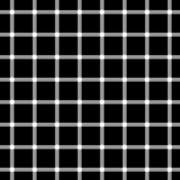
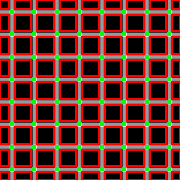
That one is easy. Pixcavator isn’t fooled at all – there are no dark spots! There are in fact light spots - captured with green.
Next, the faces-or-vase illusion.
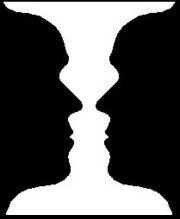

Pixcavator has found both the faces (dark objects) and the vase (light object), no problem.
In the Ponzo illusion, the “farther” bar appears longer than the “closer” one.
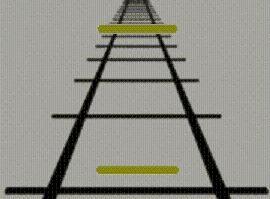
Pixcavator does not measure lengths directly but the perimeters of the bars are 170 and 176 (the computation of length is a bit tricky).
Similarly, in the Müller-Lyer illusion the middle arrow appears longer.

The perimeters according to Pixcavator are 682, 701, and 710.
In the Ebbinghaus illusion the brown circle on the left seems smaller that the one on the right.

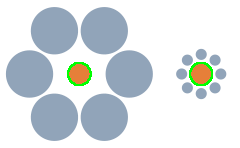
But the areas are 396 and 398.
The Jastrow illusion is even more extreme. The figures are clearly different!
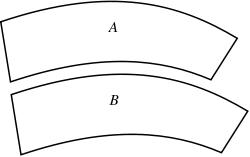
But you can’t fool the computer: the areas are 13365 and 13362, perimeters 596 and 595.
In the “simultaneous contrast illusion”, the gray bar has the same gray level throughout.

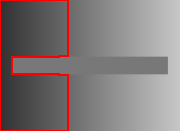
Pixcavator does not handle this well. The reason is that it doesn’t even recognize the bar as an object - it is neither dark on light nor light on dark. So this one is a tie. Well maybe - this one deserves a separate discussion.














February 9th, 2008 at 3:02 pm
[…] Recall that last time we considered the issue how computer vision isn’t fooled by optical illusions. Especially good it was it at defeating illusions based on measurements. There was one toss-up. A (uniformly) gray bar was not recognized as an object because its background varied from lighter than that of the bar to darker. […]